*NURSING > Presentation > NR 603 Week 6 Mental Health Final Treatment Plan/Analysis – Part 2 (Collection) (All)
NR 603 Week 6 Mental Health Final Treatment Plan/Analysis – Part 2 (Collection)
Document Content and Description Below
The primary diagnosis assigned for my case study presented in part 1 was bipolar disorder type 1. Diagnostic tests are not recommended for the diagnosis of bipolar disease, but labs to assess for ano... ther source causing mania, hypomania, and depression are needed. Diagnostic tests include a thyroid stimulating hormone, complete blood count, complete metabolic panel, and a toxicology screen. To assess for bipolar disorder type one a through psychiatric history, general medical history, and medication regimen is recommended by the American Psychiatric Association. The psychiatric history starts with assessment for bipolar major depression outlined by the DSM-5 diagnostic criteria that includes symptoms present for two weeks that affects one’s daily functioning. Symptoms include: depressed mood, anhedonia, significant weight gain or loss, insomnia, agitation, figure, excessive guilt, difficulty concentrating and thinking, and suicidal ideation. Mania is defined by persistent increased activity lasting for at least one week and behavior is present throughout the day outlined in DSM-5 criteria. Symptoms include increased self-esteem, insomnia, talkative, flight of ideas, distractibility, and high-risk behavior. Hypomania mirrors signs and symptoms seen in mania, yet individuals presenting with hypomania have symptoms present for at least four consecutive day and does not affect one’s daily functioning. Another important psychiatric assessment to be mindful of is based upon whether the patient presents with delusion and/or hallucinations. Finally, it is important to assess whether the patient is suicidal by directly asking the patient and deciding whether a plan has been developed. The first line treatment approach for patients suffering from bipolar type 1 is antipsychotics. McInnis (2014) discussed that lithium is the most effective FDA approved mediation for treating bipolar disorder. If treatment with first-line therapy in ineffective, second line therapy consists of Valproate, Quetiapine, and Lamotrigine. I would prescribe my patient presented in part one with: • Lithium 300 mg. Sig: Take 1 Tab by mouth TID. Disp: 90 Refills: 1 Epocrates (2019) discussed that the dose of lithium can be titrated by 300 mg per day every three days for resolution of symptoms. Prior to initiating lithium, the provider must order a urinalysis, BUN, creatinine, TSH, and calcium. Patients taking Lithium are more prone to developing hypercalcemia, hypothyroidism, and hyperthyroidism. Lithium toxicity is more likely to happen when individuals are dehydrated and/or have altered renal function. It is recommended to check lithium levels at least five days after changing the dose of lithium. For routine monitoring, a provider can check the lithium level, UA, CBC, and BMP every six to twelve months. Side effects associated with lithium include nausea, diarrhea, abdominal pain, neurologic tremor, thirst, polyuria, and drowsiness. A black box warning linked with lithium is toxicity may occur during a therapeutic level, so initiation of treatment should begin in a medical facility. At this time the patient needs to be admitted into a psychiatric unit and a referral to a hospitalist and psychiatrist should occur. The patient is experiencing a manic episode secondary to bipolar disorder type 1 and could be a harm to herself. It is important to start lithium for the patient, and I imagine non-compliance could be a potential issue. So, I want to remove these variables from the equation and place her in a monitored environment. Once the patient is discharged from the psychiatric unit, I plan to follow-up with her within one to two days. My goal with the follow-up appointment is to refer her to a psychiatrist who can better manage her diagnosis. When the patient is initially diagnosed with bipolar disorder, the patient needs to be watched closely. Education about her diagnosis and compliance with medication is imperative. Most of the time the psychiatrist will conduct psychotherapy with the patient to allow therapy to become more effective. Also, a psychiatrist or a psychiatric nurse practitioner are more knowledgeable and familiar with therapy. When the patient is stable and maintenance therapy is achieved, I can resume a psychiatric assessment and follow previously discussed labs while on lithium. ANALYSIS Pathophysiology and Pharmacology: Coryell (2018) discussed that bipolar disorder type 1 is idiopathic, yet heredity may play a role in development. Abnormalities in the regulation of neurotransmitters, such as serotonin and norepinephrine, may be a potential culprit. Lithium’s mechanism of action is unknown, but Woerkom (2017) communicated lithium causes low intracellular magnesium allowing survival during a metabolic crisis seen with dysregulation of neurotransmitters secondary to bipolar disorder. Additional Analysis of the Case: National guidelines utilized during this case study were published by the College of Psychiatric and Neurological Pharmacists. The last treatment guidelines were developed in 2002 and an update was published in 2005. Follow-Up/Referrals: During the follow-up visit, I anticipated the patient will be more stable compared to the initial visit. I plan to assess the patient’s mood by using screening tools. I will assess the patient’s depression by administering the PHQ-2. The Mood Disorder Questionnaire will help assess present and past episodes linked with mania and hypomania. Persons with bipolar disease may have an increased risk for developing substance abuse. Due to this, I will use the CAGE screening tool to assess for substance abuse. Also, I will assess for suicidal ideation during this time. To determine level of daily functioning, I will administer the Sheehan Disability Scale. I will determine medication compliance and whether the patient is experiencing any side effects from Lithium. I have already referred the patient to a psychiatrist, so I will decide if the patient has been receptive to this provider-patient relationship. Quality: In hindsight, signs and symptoms associated with psychiatric diagnoses can be overlapping. It is important to never jump to conclusions, and conduct a thorough assessment so the most accurate diagnosis can be reached. I believe screening tools can be very effective alongside a successful patient history. Patients presenting with a manic episode secondary to bipolar disorder type 1 need a higher level of care than can be offered in a primary care clinic. It is important to refer these patients as quickly as possible, so they can receive the care that is needed. Coding and Billing: ICD10: BIPOLAR DISODER, SINGLE MANIC EPISODE F30.0 EVALUATION AND MANAGEMENT 99204 COMPREHENSIVE METABOLIC PANEL 80053 URINALYSIS 81000 TOXICOLOGY SCREEN 80305 TSH 004259 References Coryell. (2018). Bipolar disorders. MERCK Manual Professional Version. Retrieved from https://www.merckmanuals.com/professional/psychiatric-disorders/mood-disorders/bipolar- disorders#targetText=Bipolar%20disorders%20are%20characterized%20by,Diagnosis%20is %20based%20on%20history. Epocrates. (2019). Lithium. Retrieved from online.epocrates.com/drugs/4301/lithium/Adult- Dosing McInnis, M. (2014). Lithium for bipolar disorder: A re-emerging treatment for mood instability. Current Psychiatry, 13(6), 38-44. Retrieved from mdedge.com/psychiatry/article/82687/bipolar- disorder/lithium-bipolar-disorder-re-emerging-treament-mood Woerkom, A. (2017). A fully integrated new paradigm for lithium’s mode of action-Lithium utilizes latent cellular fail-safe mechanism. Neuropsychiatric Disease and Treatment, 12, 275- 302. doi: 10. 2147NDT.S123612 [Show More]
Last updated: 1 year ago
Preview 1 out of 5 pages
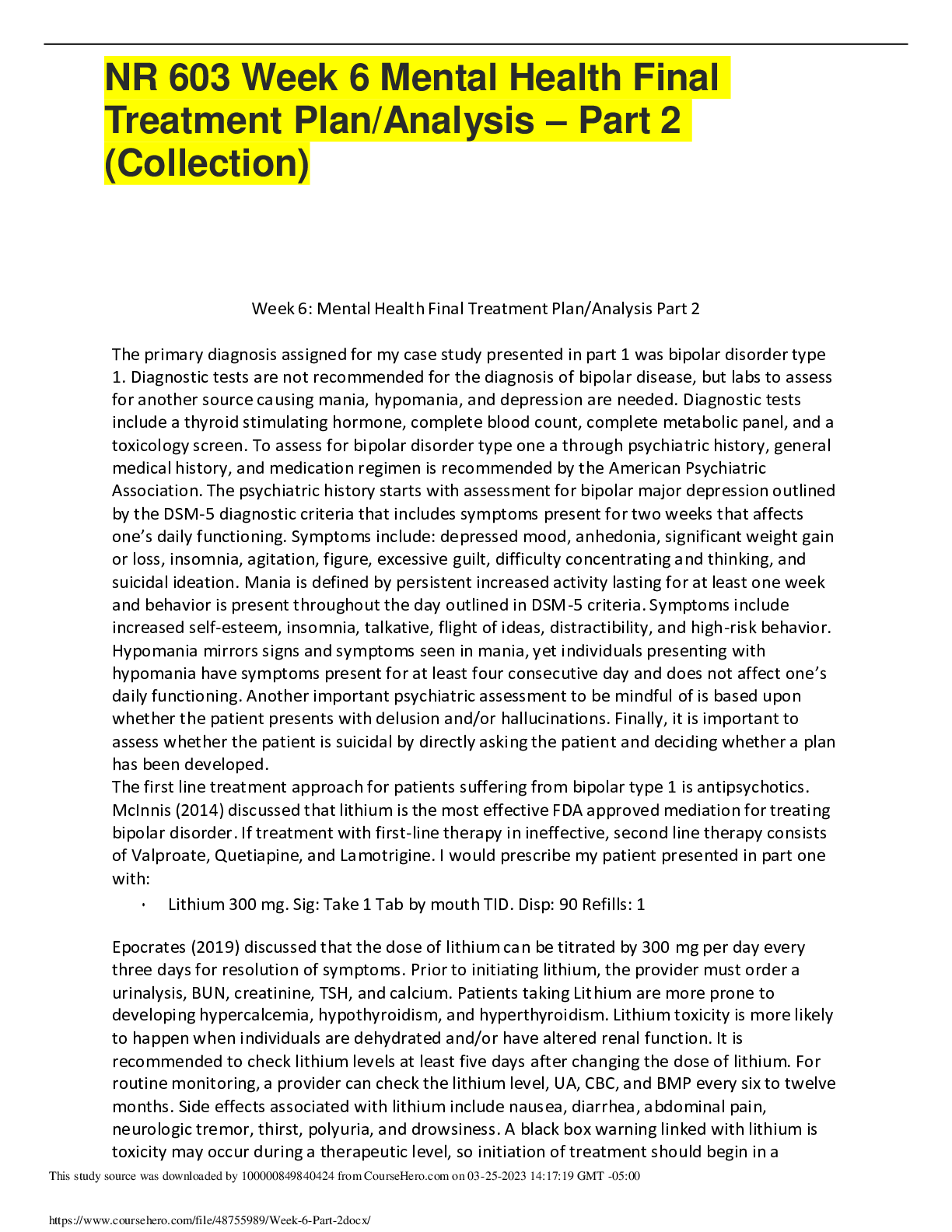
Reviews( 0 )
Document information
Connected school, study & course
About the document
Uploaded On
Mar 25, 2023
Number of pages
5
Written in
Additional information
This document has been written for:
Uploaded
Mar 25, 2023
Downloads
0
Views
83


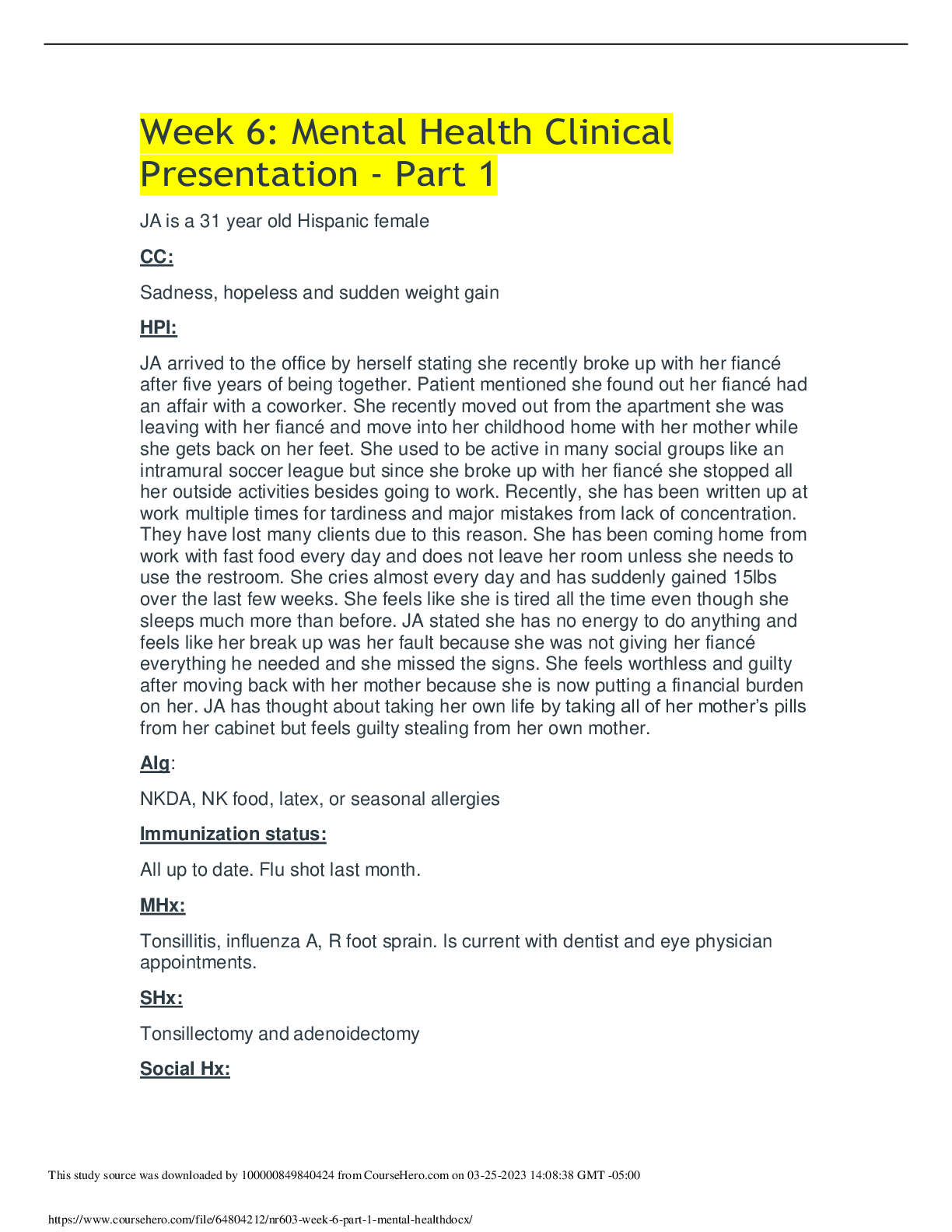
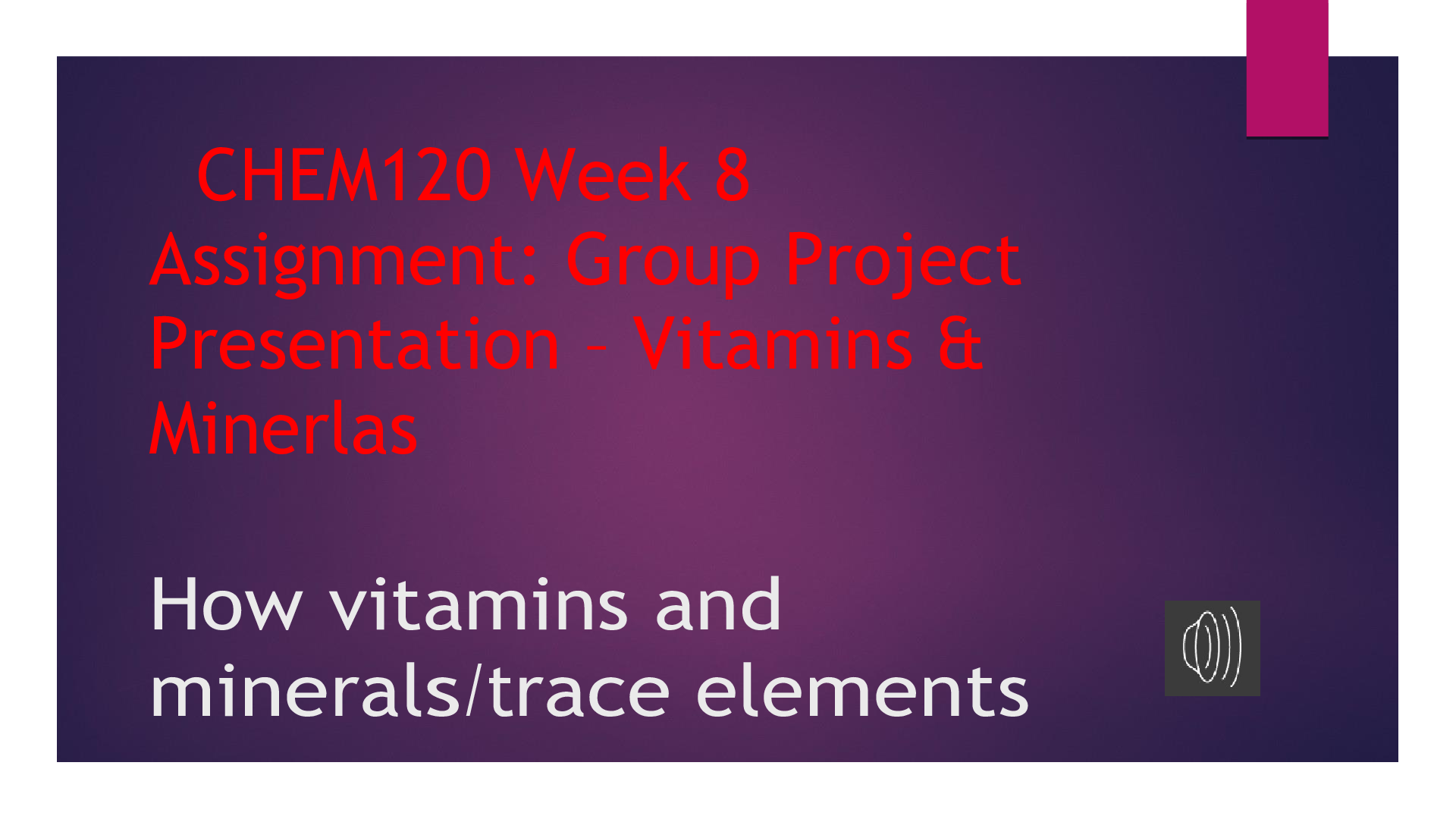
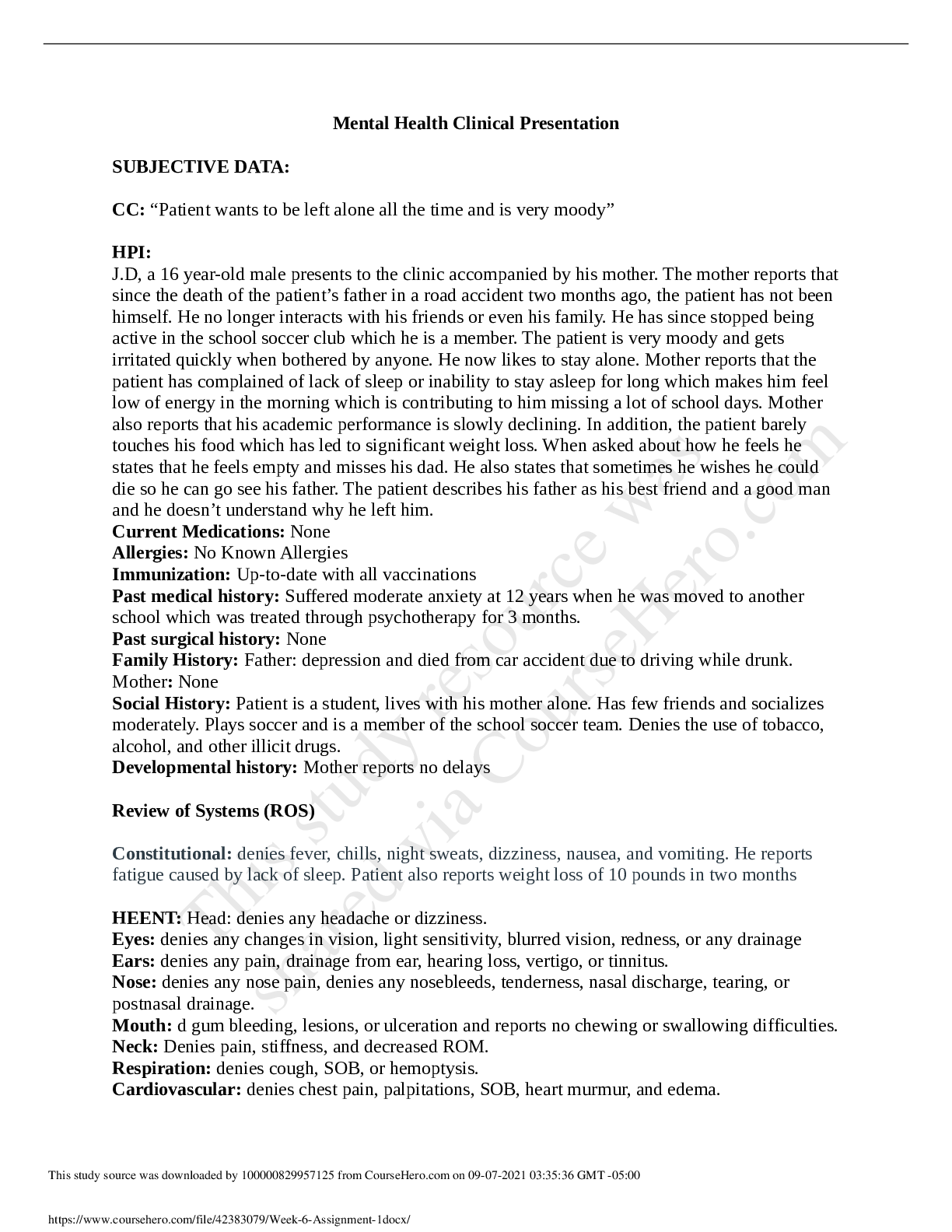




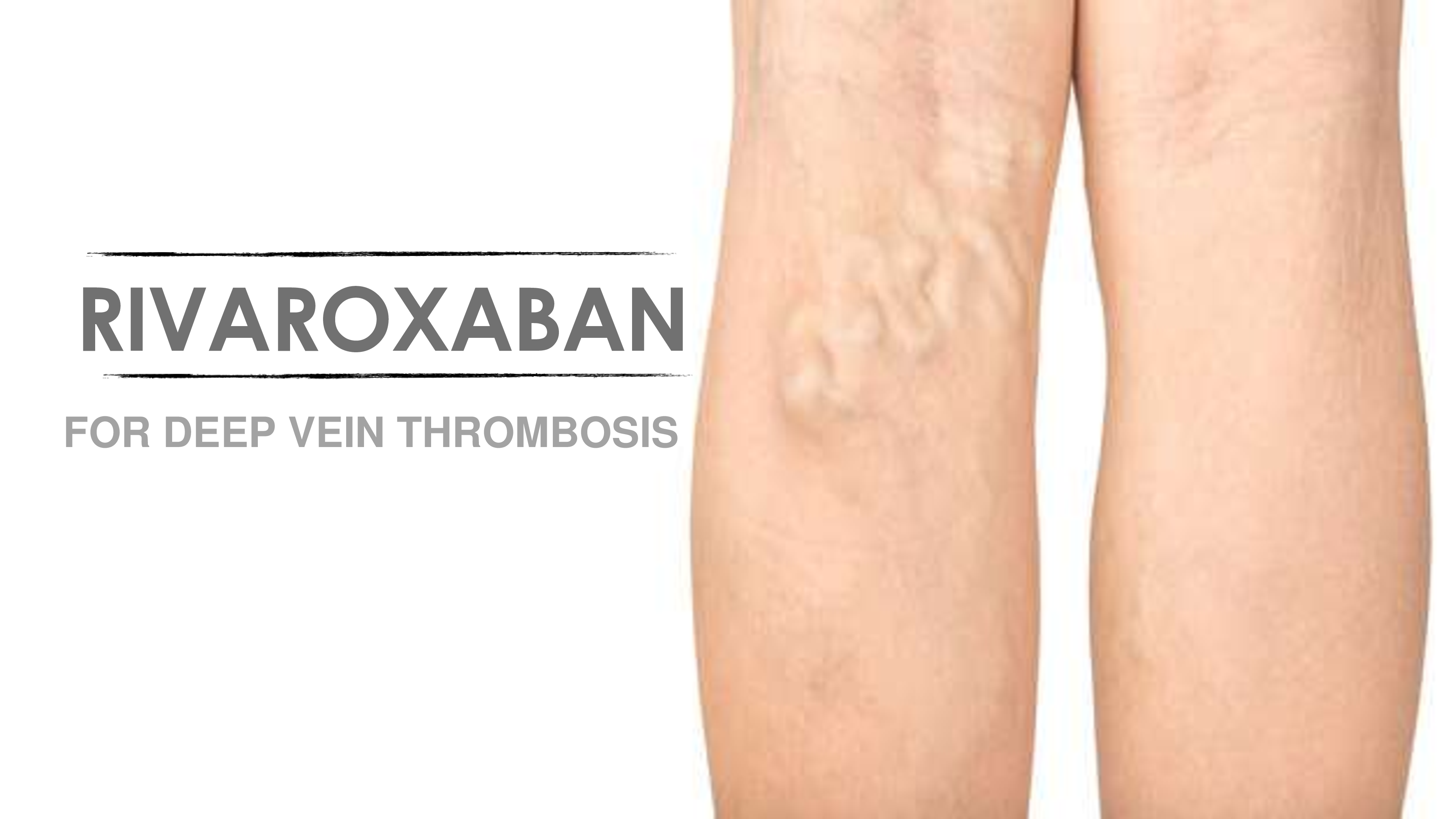

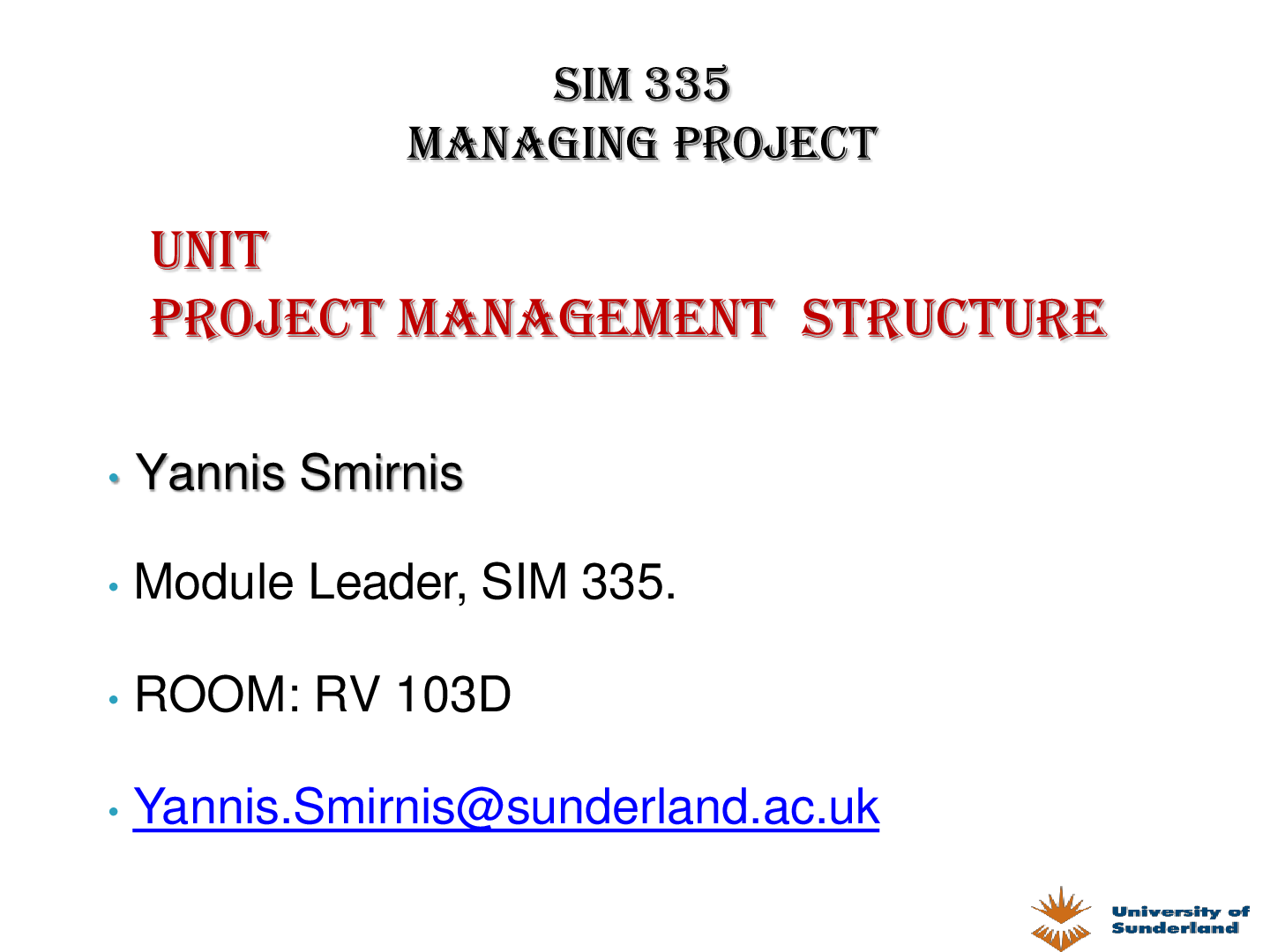



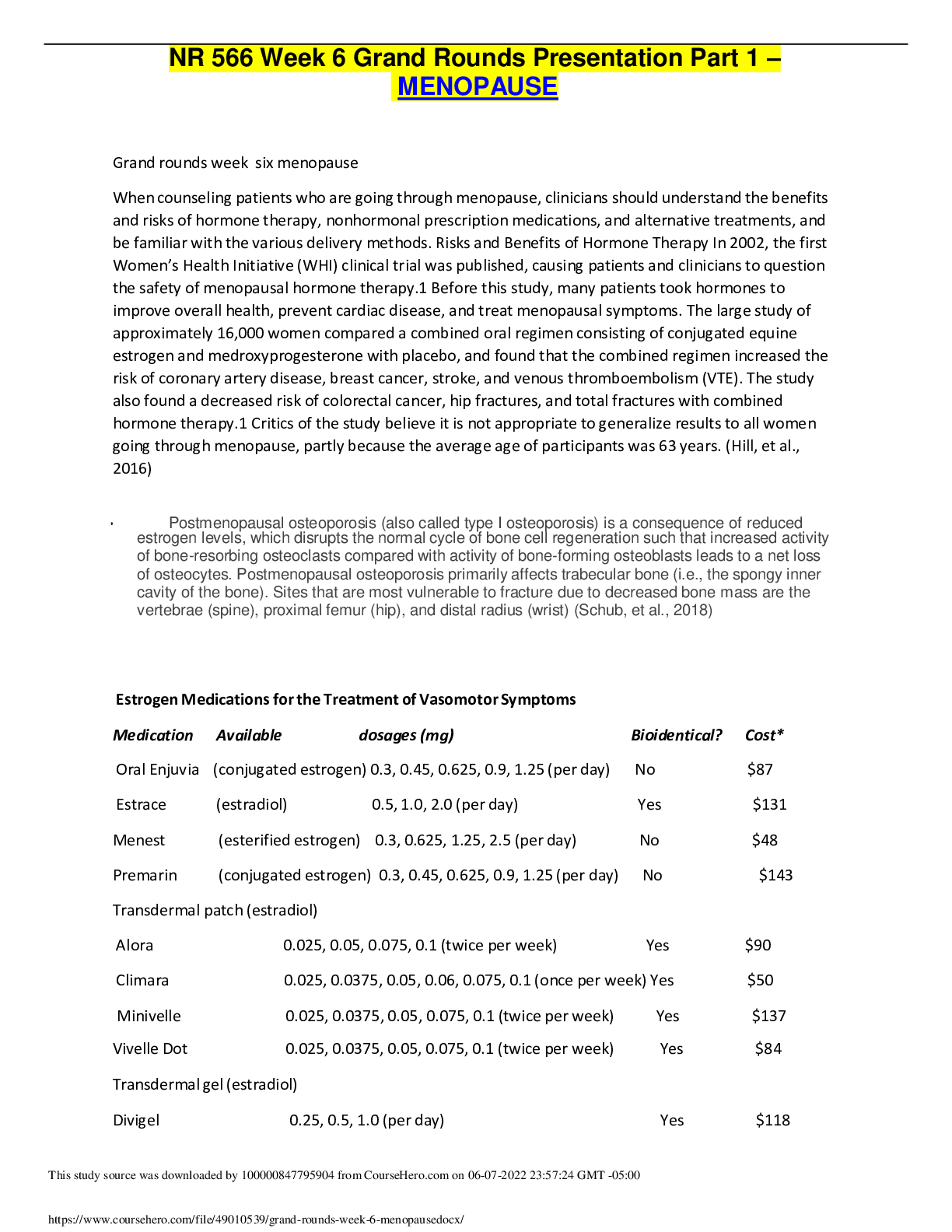



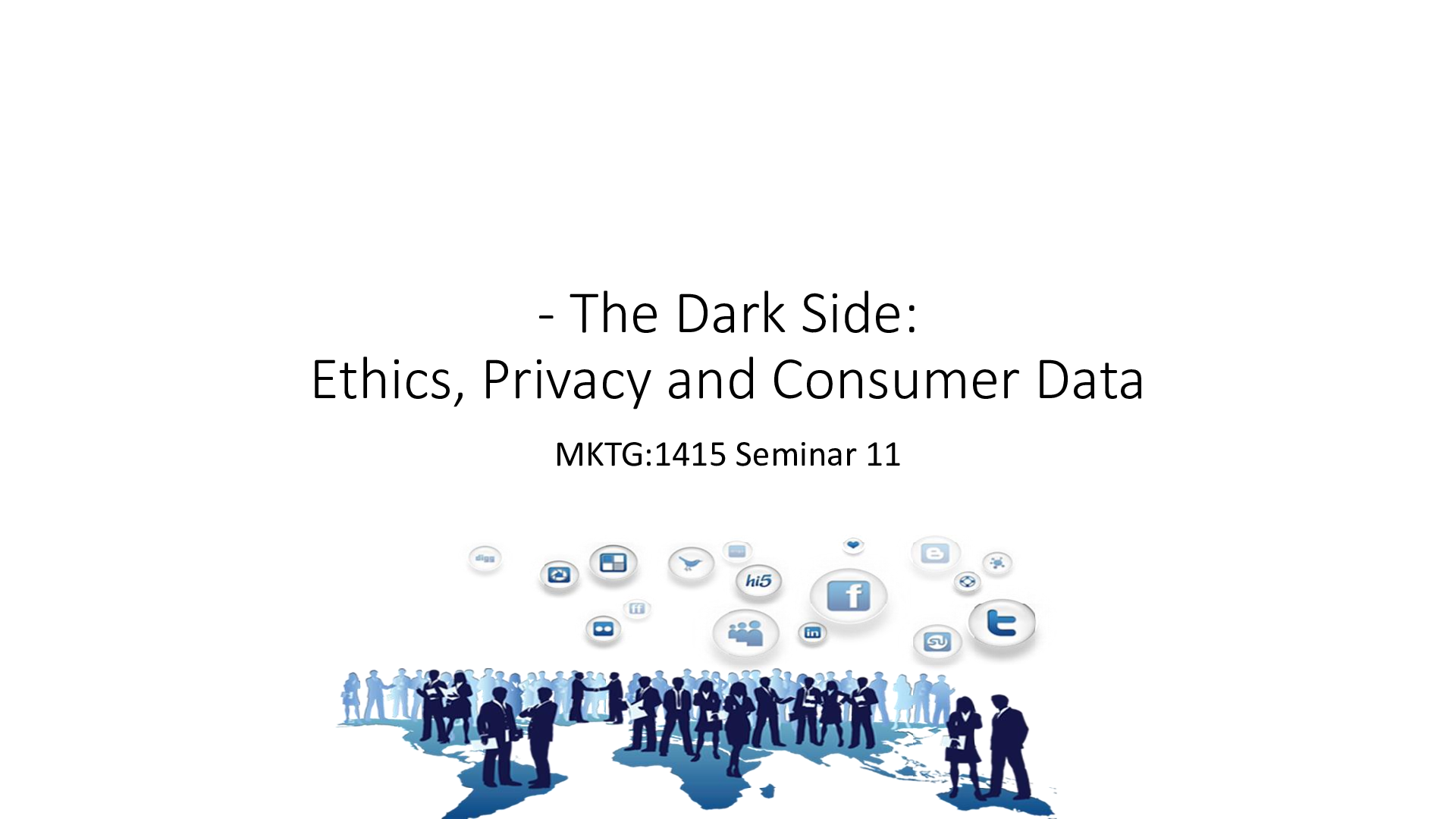
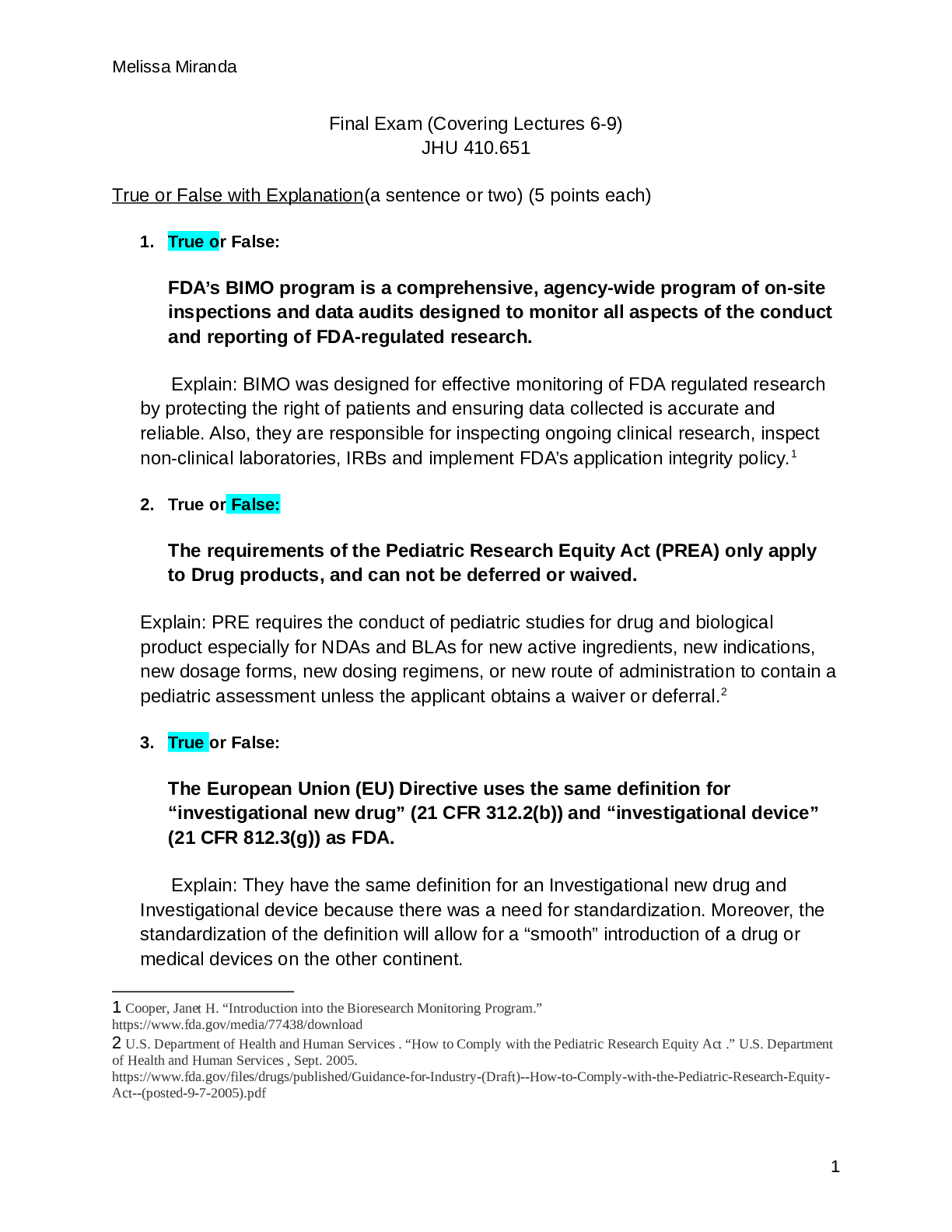
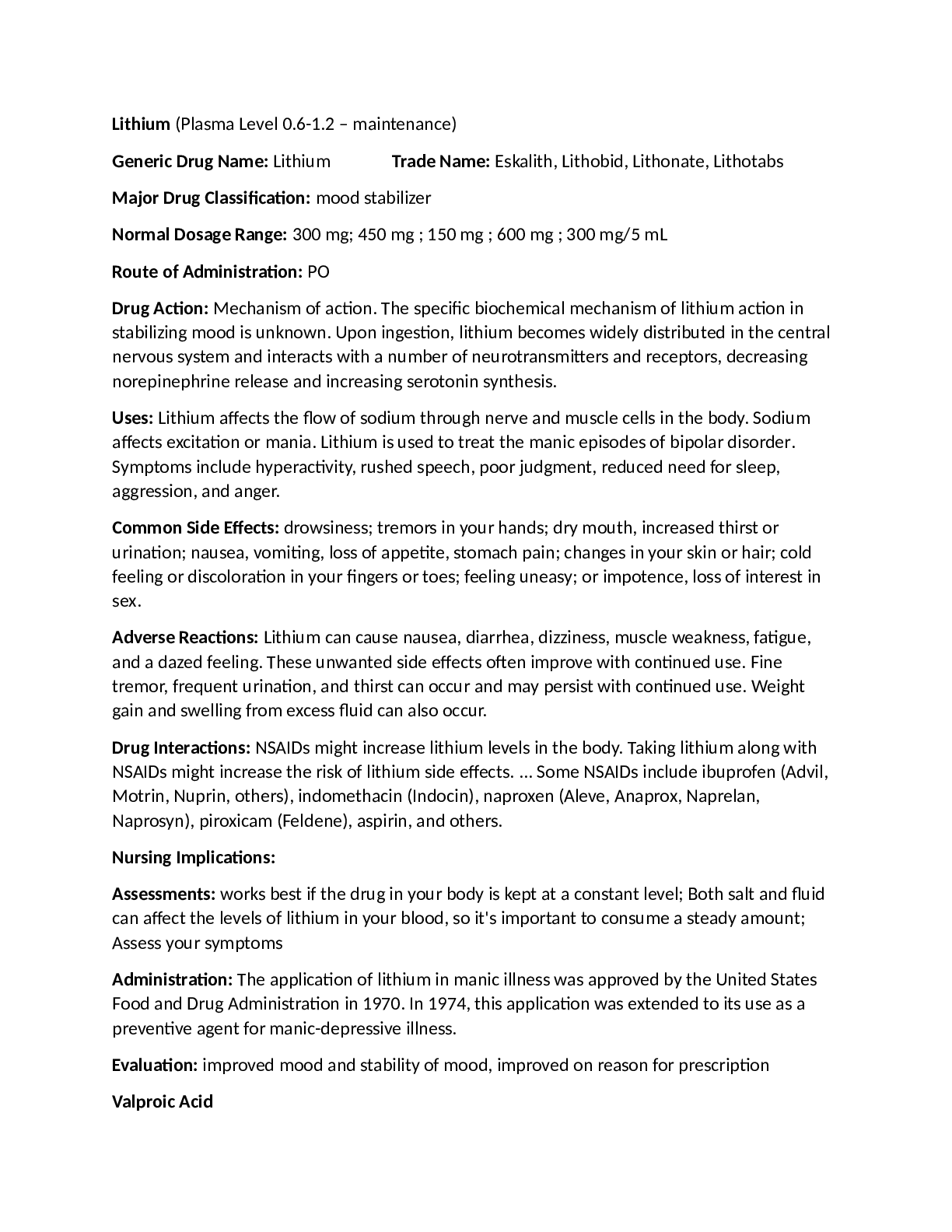
.png)

